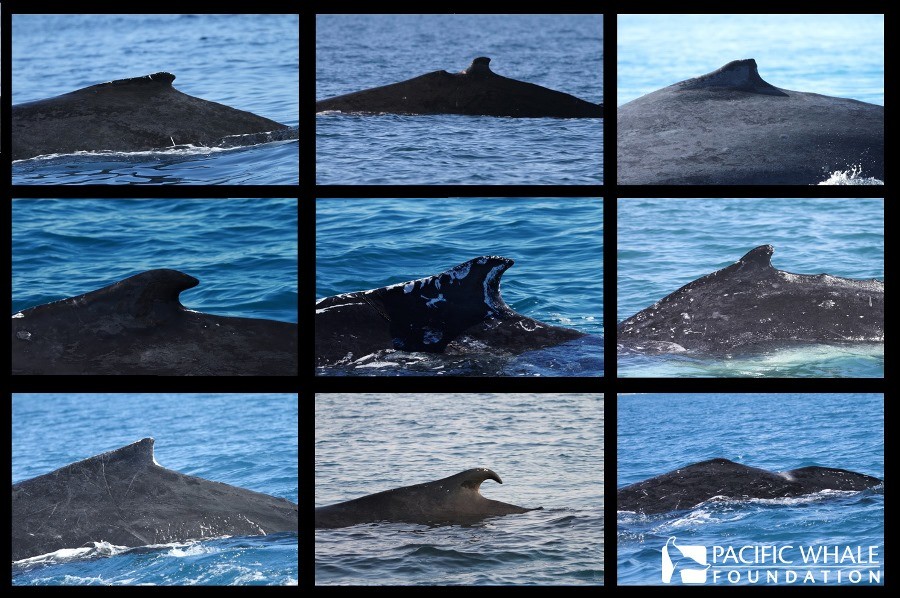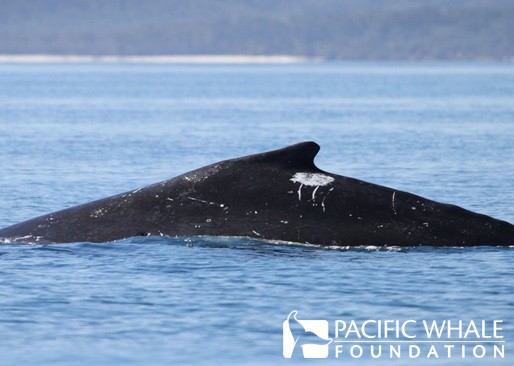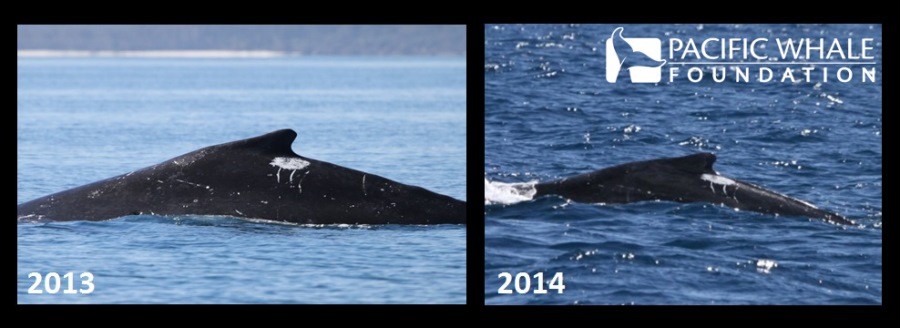Did you know that the underside of a humpback whale’s tail, called the flukes, is the main characteristic used by scientists to identify individuals? In addition, a humpback whale’s dorsal fin can also be used to distinguish individuals and/or help confirm a match. This is why, whenever possible, the research team aims at taking a photo-ID of the flukes as well as the left and right dorsal fins of each individual within a pod.

Dorsal fins vary in shape and form. Some are round, squared, pointy, even very hooked, which with a little bit of imagination, almost look like a witch’s nose. In some cases a dorsal fin might be scarred, for example from a propeller or fishing line, or even missing. Patterns and coloration of the skin on the body are also unique. So much that, occasionally, the conspicuous shape of the dorsal fin and/or the body patterns of an individual will attract your eye and stick in your memory. In those instances, you find yourself giving that particular individual a name that characterizes that special feature.
During the 2013 whale season for example, I took a photo of the left dorsal fin of a humpback whale that looked as if a white oval had been painted on its side, and that some of that paint had started to drip. I did find it intriguing at the time and, in my mind, named that whale “Paint drip”. That day, a photo-ID of its flukes was also taken so its official identification code in Pacific Whale Foundation’s ‘within season’ catalog was HB13021. Simply put, it was 21st individual to be identified in Hervey Bay in 2013.

This year, while processing the daily photos taken in the field, I stumbled across a photo of a left dorsal fin that looked very familiar. Could it be “Paint drip”? If so, that would be so exciting. I immediately stopped flicking through the photos as the anticipation and excitement were too much to bear and I really had to double check. I opened the 2013 humpback whale photo catalog, compared the photos, and discovered that the left dorsal fins were a perfect match. I have to admit, being able to remember “Paint drip” after thousands of photos taken and sighting it again this year was very exciting!

Even more intriguing was the fact that “Paint drip” had been sighted only 3 days apart over the two seasons, on the 12th of August 2013 and 9th of August 2014. Such information is very important for scientists as we learn more about the site fidelity and movement patterns of the East Australian humpback whale population.

We are excited to share the first official match between the 2013 and 2014 whale seasons with you – stay tuned for more updates from the field.
